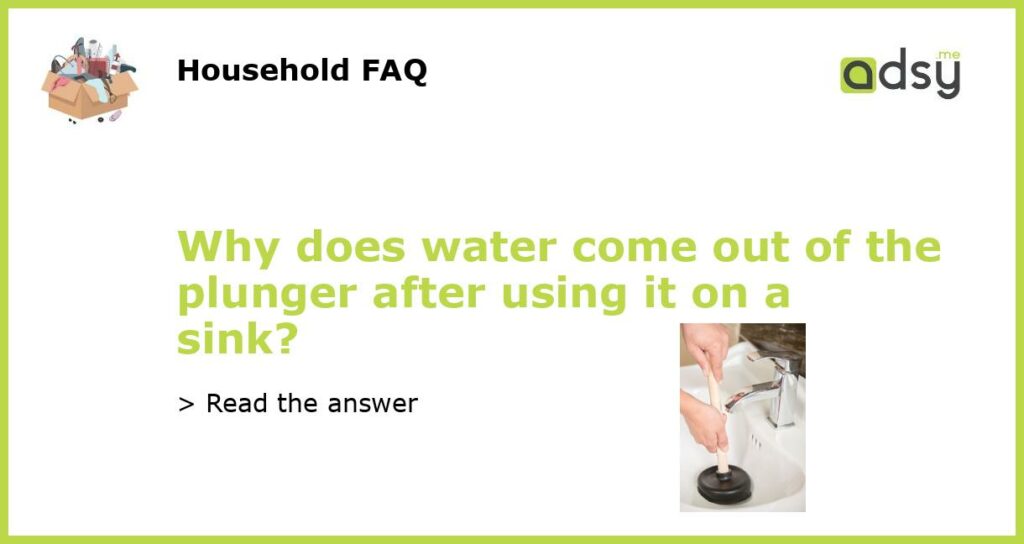Understanding the Mechanism of a Plunger
Before answering the question, it is important to understand how a plunger works. When the plunger is pushed down, it creates a vacuum that sucks water and air out of the drain. When the plunger is pulled up, it creates pressure that pushes water and air back into the drain. This pressure can dislodge any clogs and allow water to flow freely again.
Why Does Water Come Out of the Plunger?
If water comes out of the plunger after using it on a sink, it is likely due to the vacuum created by the plunger. When the plunger is pushed down, it sucks water and air out of the drain. If the plunger is not completely sealed against the sink, some of that water and air can escape back up through the plunger and into the sink.
How to Prevent Water from Coming Out of the Plunger?
To prevent water from coming out of the plunger after using it on a sink, it is important to make sure the plunger is completely sealed against the sink. This can be done by adding a small amount of water to the sink before using the plunger. The added water will help create a tighter seal between the plunger and the sink, preventing water and air from escaping back up through the plunger.
What If Water Continues to Come Out of the Plunger?
If water continues to come out of the plunger after using it on a sink, it is possible that there is a larger clog further down in the drain. In this case, it may be necessary to use a plumbing snake or call a plumber to remove the clog. Continuing to use a plunger may only exacerbate the issue and cause more water to come out of the plunger.
A plunger is an effective tool for removing clogs in sinks, toilets, and other drains. However, if water comes out of the plunger after using it on a sink, it is likely due to a poor seal between the plunger and the sink. By adding water to the sink before using the plunger and ensuring a tight seal, water and air can be prevented from escaping back up through the plunger.






